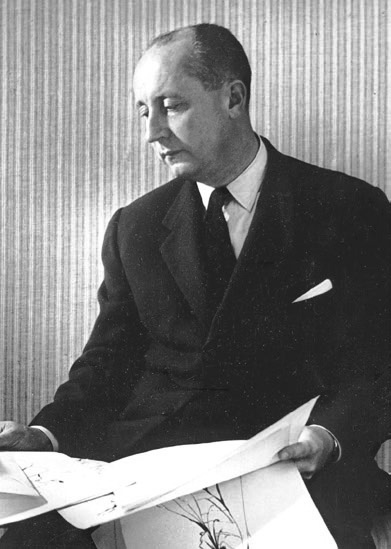Downtown in Style - Page 2
 |
Central to the scene were the city's department stores, including I. Magnin & Co. (separately owned by other members of the Magnin family), the City of Paris, Joseph Magnin, all clustered around Union Square.
Among the clientele for couture were modern tract homebuilder Joe Eichler and his wife, Lillian, whose beauty and ability to wear clothes Joe much admired. Joe had his suits custom made at Brooks Brothers, according to his son Ned.
Joe knew Cyril Magnin (perhaps through their involvement with the Democratic Party), and once joked with him, "I could ruin your store by stopping my wife from shopping there."
These San Francisco stores didn't merely hawk fashion through window displays, fashion shows, and other spectacles.
 |
They helped create it. And they understood what they were selling—what I. Magnin's merchandising manager, Gertrude Doane, called "an emotional product."
The stores contributed to a tumultuous couple of decades in the fashion industry, a period that saw styles change from hat-and-white gloves for ladies and monochrome for men to miniskirts, hippie fringes, T-shirts, and jeans—well, for anyone.
What changed just as much as the look of fashion was the way fashion ideas spread, from the top-down spread of styles from haute couturier to mid- and then mass-market in the 1950s, to inspiration coming from young people allied with various counter cultures in the '60s.
 |
The boutiques of London's Carnaby Street and the hippies of San Francisco played a role in the 1960s—as did the department stores, which swung with the swinging times.
Top couturiers squawked—but often had to follow.
"I'm not concerned with the hippies or the Village or the London look. It's ridiculous to say they're making fashion," designer James Galanos, whose far-from-conservative custom-made garments could be found at I. Magnin, told Women's Wear Daily in 1967.
"Most of them wouldn't be allowed in the best restaurants in town. True, they may be making fashion in their own backyard. But, heaven forbid, a woman in her 40s or her 50s—even 20s or 30s—going out and buying a smelly old thing that someone else has worn."
 |
|
|
Notably, throughout the mid-century women weren't only the prime customer for fashion. They helped create it as designers, owners of couture houses, buyers, and more.
"We hired more and more young people, mostly women, who were talented and innovative and agreed with what we wanted to do with the burgeoning youth market—a full 15 years ahead of the 1960s when everyone began to think young for a profit," Cyril Magnin wrote in his 1981 autobiography (co-authored by a woman, Cynthia Robins.)
"Besides," he wrote, "women worked cheap."




